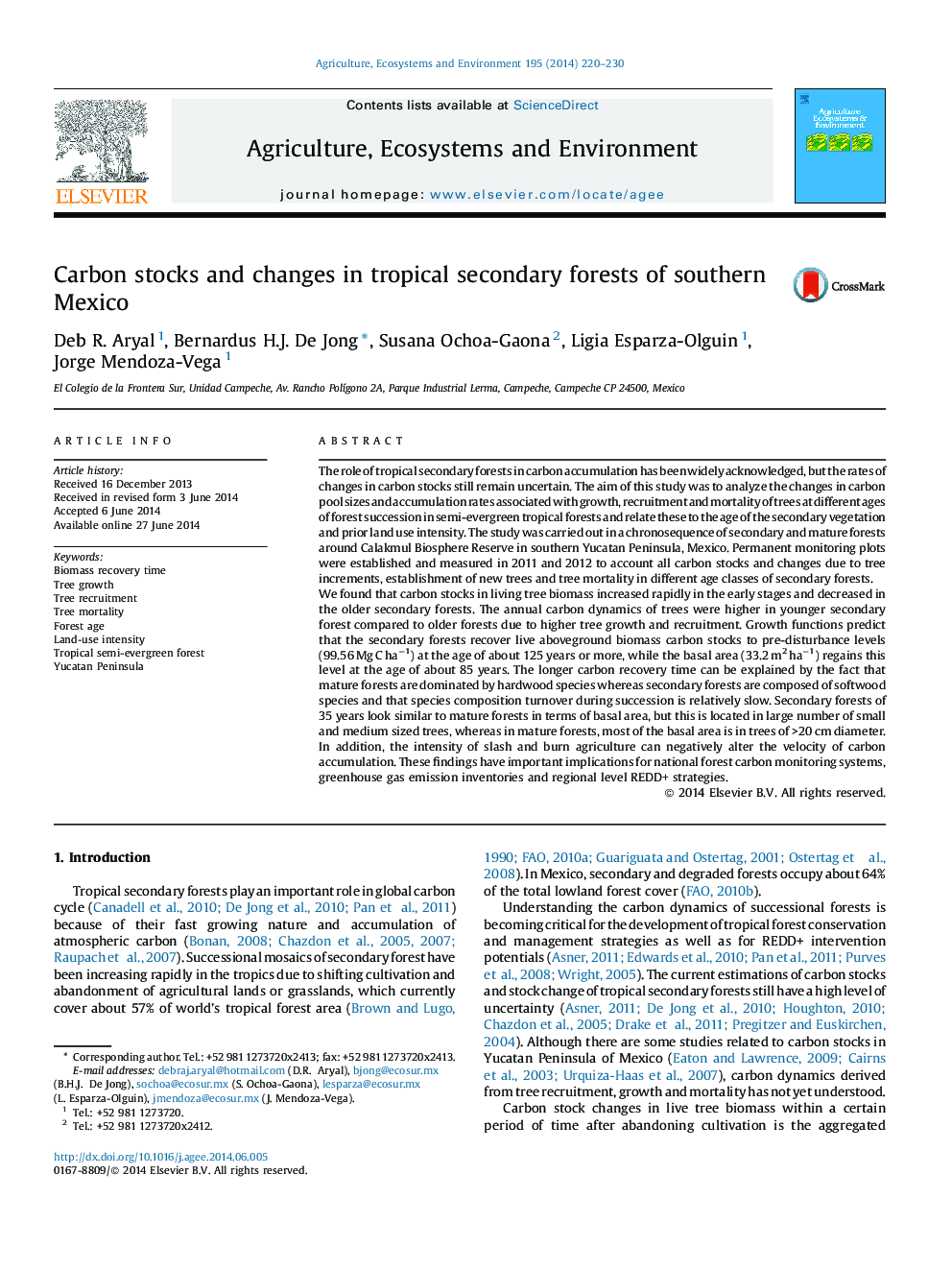| کد مقاله | کد نشریه | سال انتشار | مقاله انگلیسی | نسخه تمام متن |
|---|---|---|---|---|
| 2413925 | 1552057 | 2014 | 11 صفحه PDF | دانلود رایگان |
• Carbon dynamics in young forests are much than in mature forests.
• Wood density increases during succession due to changes in species composition.
• 35-year old plots recover 80% of BA of mature forest due to number of small trees.
• It takes more than a century for secondary forests to recover carbon densities.
• High prior land-use intensity slows down the carbon recovery rates.
The role of tropical secondary forests in carbon accumulation has been widely acknowledged, but the rates of changes in carbon stocks still remain uncertain. The aim of this study was to analyze the changes in carbon pool sizes and accumulation rates associated with growth, recruitment and mortality of trees at different ages of forest succession in semi-evergreen tropical forests and relate these to the age of the secondary vegetation and prior land use intensity. The study was carried out in a chronosequence of secondary and mature forests around Calakmul Biosphere Reserve in southern Yucatan Peninsula, Mexico. Permanent monitoring plots were established and measured in 2011 and 2012 to account all carbon stocks and changes due to tree increments, establishment of new trees and tree mortality in different age classes of secondary forests.We found that carbon stocks in living tree biomass increased rapidly in the early stages and decreased in the older secondary forests. The annual carbon dynamics of trees were higher in younger secondary forest compared to older forests due to higher tree growth and recruitment. Growth functions predict that the secondary forests recover live aboveground biomass carbon stocks to pre-disturbance levels (99.56 Mg C ha−1) at the age of about 125 years or more, while the basal area (33.2 m2 ha−1) regains this level at the age of about 85 years. The longer carbon recovery time can be explained by the fact that mature forests are dominated by hardwood species whereas secondary forests are composed of softwood species and that species composition turnover during succession is relatively slow. Secondary forests of 35 years look similar to mature forests in terms of basal area, but this is located in large number of small and medium sized trees, whereas in mature forests, most of the basal area is in trees of >20 cm diameter. In addition, the intensity of slash and burn agriculture can negatively alter the velocity of carbon accumulation. These findings have important implications for national forest carbon monitoring systems, greenhouse gas emission inventories and regional level REDD+ strategies.
Journal: Agriculture, Ecosystems & Environment - Volume 195, 1 October 2014, Pages 220–230
